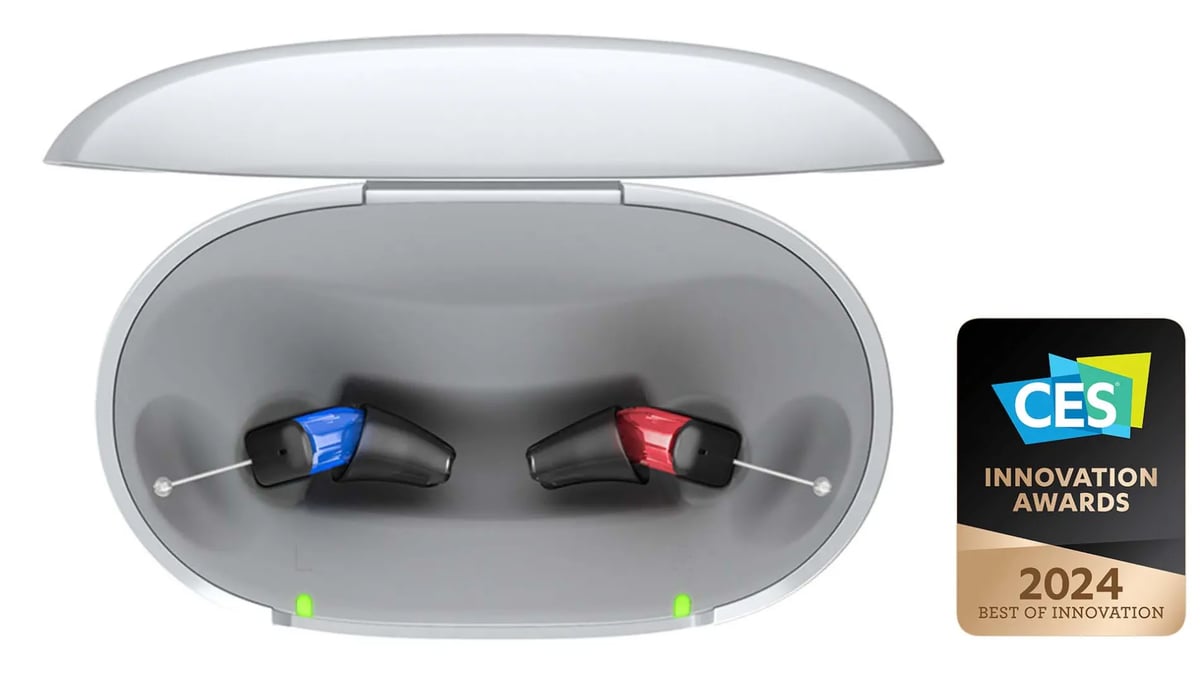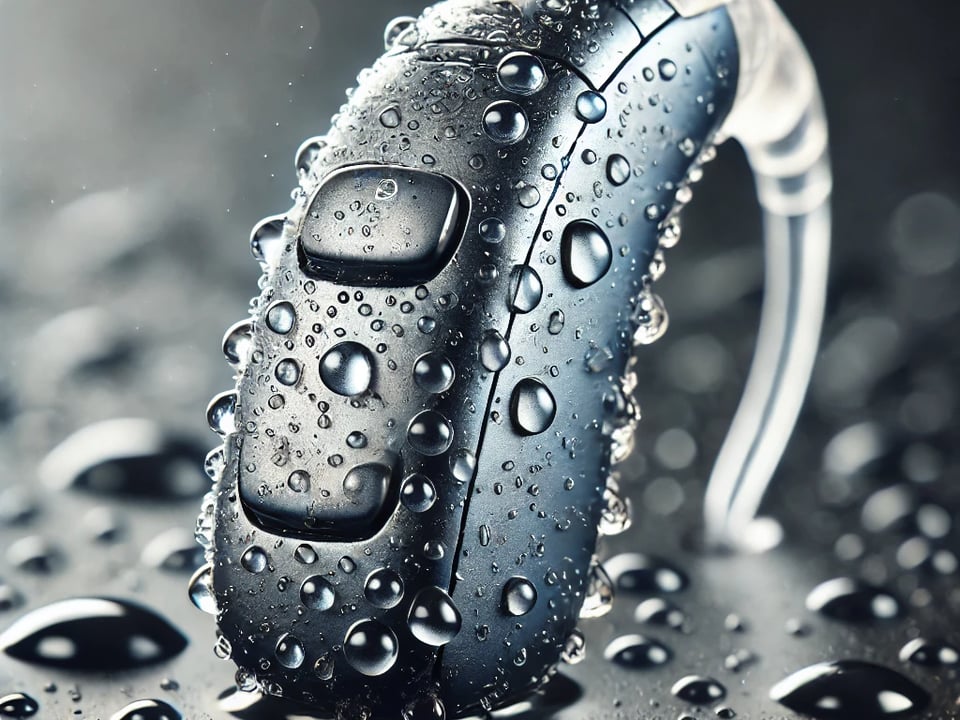
Syringing vs Microsuction: What’s Safest for Your Ears?
January 11, 2025
Understanding Auditory Processing Disorder in Children
February 1, 2025Hearing aids come in many shapes and sizes, and the best one for you or your child depends on various factors. When I sit down with a patient or a parent at The Audiology Place, we start not by picking a product, but by understanding lifestyle, hearing needs, ear anatomy, dexterity, and even cosmetic preferences. Hearing aids are not one-size-fits-all; choosing the right style is only part of the journey. What follows is a guide to the different types of hearing aids available today, written not from a sales catalogue but from the perspective of someone who fits them every week and sees the difference the right one can make.
Behind-the-Ear (BTE) Hearing Aids
Most people are familiar with behind-the-ear hearing aids. These devices sit comfortably behind the ear and connect to a custom earmould or a slim tube that directs sound into the ear canal. They are known for their durability and power, which makes them especially suitable for people with moderate to profound hearing loss.
One of the things I often point out is that modern BTEs are not bulky or conspicuous like they used to be. Today’s models are sleek and lightweight and can come in colours that either blend with hair and skin or make a statement if that’s your style. For children, BTEs are often the most practical choice because they can be adjusted as the child grows and are compatible with accessories like FM systems used in classrooms.
Receiver-in-Canal (RIC) Hearing Aids
RICs, or receiver-in-canal hearing aids, are a popular choice among adults. They look similar to BTEs in that part of the device rests behind the ear, but instead of a tube, a thin wire runs from the main body of the device into the ear canal, where the speaker or ‘receiver’ sits.
These devices tend to be smaller and more discreet than traditional BTEs. They provide excellent sound quality and are well-suited for people with mild to severe hearing loss. Because the speaker sits closer to the eardrum, users often report a more natural sound experience. Another advantage is that the open-fit design helps to avoid the sensation of a blocked ear, which can be important for someone with good low-frequency hearing.
In-the-Ear (ITE) Hearing Aids
In-the-ear hearing aids sit entirely within the outer ear and are custom-made to fit the shape of the user’s ear. They’re a good option for people who want something easy to handle, relatively discreet, but still powerful.
ITE aids are a little larger than some completely-in-the-canal models, so they are easier to insert and remove, and often come with manual controls like volume wheels or program buttons. For someone with dexterity issues or arthritis, these are often a better fit than smaller models.
In-the-Canal (ITC) and Completely-in-Canal (CIC) Hearing Aids
ITC and CIC hearing aids are both types of in-ear devices that sit inside the ear canal. They are custom moulded and very discreet. CICs are the smallest of the two and often barely visible to others.
People often ask me if these are the best simply because they are the least visible. The answer is, it depends. CICs can be great for mild to moderate hearing loss and for those who want a very subtle device. However, they can be more difficult to handle, have fewer features due to their small size, and may not be as effective in noisy environments.
ITC devices strike a balance. They’re still small and discreet but can include features like dual microphones or connectivity functions that CICs might not support. That said, people with very small or narrow ear canals may not be suitable candidates for these types.
Invisible-in-Canal (IIC) Hearing Aids
IIC hearing aids are the most discreet devices available. They sit deep within the ear canal and are completely invisible when worn. They are custom-made for each individual and are a popular choice for those who want maximum discretion.
I often explain the trade-offs here. While IICs are cosmetically appealing, they are not appropriate for every ear or every type of hearing loss. They are generally best for mild to moderate hearing loss. Because of their position in the ear, they can be more prone to issues like wax build-up or moisture damage, and they may not include some of the more advanced features like directional microphones or Bluetooth.
Rechargeable Hearing Aids
A feature rather than a style, rechargeable hearing aids have become incredibly popular in recent years. Most RIC and BTE models now come with lithium-ion rechargeable batteries. This eliminates the need to fiddle with small batteries, which can be a real barrier for older adults or anyone with vision or dexterity concerns.
Many of my patients love the convenience of charging their hearing aids overnight, like a phone, and not having to worry about carrying spare batteries around.
Bluetooth and Smart Features
Modern hearing aids are not just about amplifying sound. Many come with Bluetooth connectivity, allowing users to stream music, make phone calls, and even have Zoom meetings directly to their devices. Some models are compatible with smartphone apps that allow fine-tuning, remote adjustments, or location-based settings.
When fitting someone with hearing aids, I always consider how these features might fit into their daily routine. A hearing aid that connects seamlessly to their iPhone or Android can be life-changing for someone who uses their phone all day.
How AI Is Changing Hearing Aids – A Clinician’s Perspective
As an audiologist working with people of all ages and stages, I’ve always believed that the best hearing care is personal and evidence-based. In recent years, artificial intelligence has made a quiet but powerful shift in how we approach hearing aids. It’s not just about fancy new technology – it’s about using it to support individuals better, improve outcomes, and ultimately make life easier and richer for those with hearing loss. So I want to take a moment to share what’s changing, and what it means for my patients.
Smarter Tools for Audiologists and Better Outcomes for Patients
From the clinic side, AI is becoming a helpful tool for audiologists, especially regarding fitting and follow-up care. Some of the newer hearing aid fitting software uses machine learning to suggest starting points based on a patient’s hearing profile. This doesn’t replace clinical judgement, but it does mean we can start from a more precise place, saving time and helping us personalise more quickly.
Another area where we’re seeing change is in auditory training and rehabilitation. Now, programs adapt in real time to the user’s performance. One I’ve worked with adjusts listening tasks on the fly depending on how well the person manages speech-in-noise exercises. These supports help people stay engaged and see real progress, especially in those first few months of adjustment.
And what about outcomes? In my experience, patients using AI-supported hearing aids are often more satisfied, particularly in noisy environments. Conversations at the café, in the car, at family gatherings are the real-life moments where the difference becomes clear.
What’s Happening Inside the Hearing Aids
The technical side of AI in hearing aids is where things get interesting. Behind the scenes, tiny processors are now running deep neural networks – algorithms inspired by how the brain processes sound. These systems are constantly learning and adjusting based on the sound environment, separating speech from background noise with far greater accuracy than older devices ever could.
Some hearing aids, like Oticon’s recent models, have been trained on hundreds of different sound environments so they can respond quickly and intelligently to the world around them. Others, like Starkey’s Genesis AI, go a step further and use real-time computing to mimic aspects of cortical hearing, helping with things like speech clarity and directionality.
All this processing power means that modern hearing aids don’t just amplify sound. They actively enhance the signal we want to hear and suppress what we don’t. That’s a big leap forward for anyone struggling to follow conversations in noisy places.
Features That Make Life Easier
What I really appreciate as a clinician is how AI is making hearing aids more usable, not just smarter. Many of my patients no longer need to think about switching programs or adjusting settings manually. The device simply learns their patterns and adapts. Whether they’re moving from the kitchen to the garden or heading out for a walk, the hearing aid keeps up.
Bluetooth connectivity is now standard in many devices, streaming phone calls, music, and even Zoom meetings straight to the ear. And some hearing aids now double as health monitors – tracking steps, detecting falls, even linking to smart home systems. These features may seem like bells and whistles, but for many people they offer real safety, convenience, and confidence in daily life.




